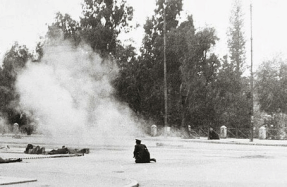ROBERT CAIN

Hushed, anxious voices and the clattering of kit echoes around the old church at Oosterbeek, as the early morning light filters in and begins to rouse the British troops. One officer, Major Richard ‘Dickie’ Lonsdale, makes his way through the pews, lined full of sleeping soldiers, toward the pulpit. Some look up as he passes, noticing his arm in a sling and the bloodied bandage wrapped around his head. Casting his eye over the beleaguered and unlikely congregation, already bloodied and worn down from four days of fighting in enemy territory, Lonsdale draws a breath and pauses as he musters up what words of encouragement he can.
Major Robert Cain, of the 2nd South Staffordshire regiment, was among Lonsdale’s men that day, huddled in the church just west of the Dutch town of Arnhem. The 35-year-old military veteran knew more than most
You’re reading a preview, subscribe to read more.
Start your free 30 days





